A common problem with tissue covered balsa structures is that the tissue will expand and contract with changes in temperature and humidity. When flying outdoors, the air may be warmer, humidity lower than in the shop where the model was built, and we are in direct sunlight. This can cause the tissue to dry out, shrink and warp the structures.
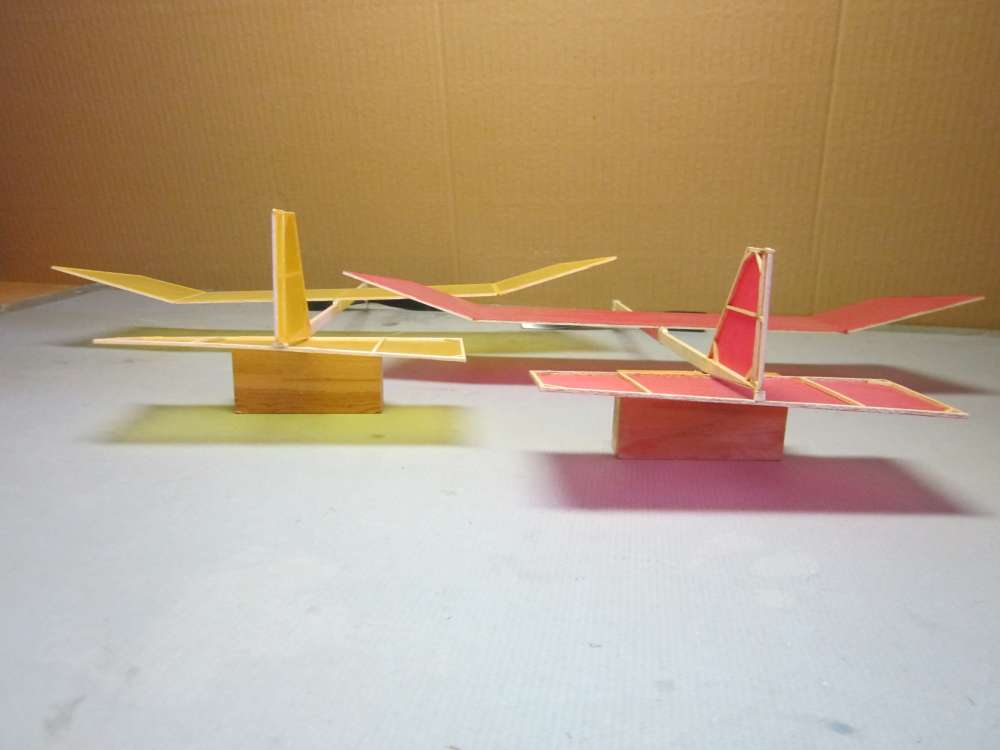
Many ideas have been tried to prevent or reduce the shrinking of the tissue. A common one is to wad the tissue tightly to wrinkle it and then spread it out to flatten it before adhering it to the balsa. The uneven surface gives the tissue a little shrinkage leeway before it comes up snug. A common complaint about this method is that it looks awful. It is also difficult to standardize.
This new way of dimpling tissue uses a piece of window screening to emboss a regular pattern of small squares into the paper. Cover a suitable size piece of corrugated cardboard with a plastic grocery store produce bag. Place the window screening over the board.
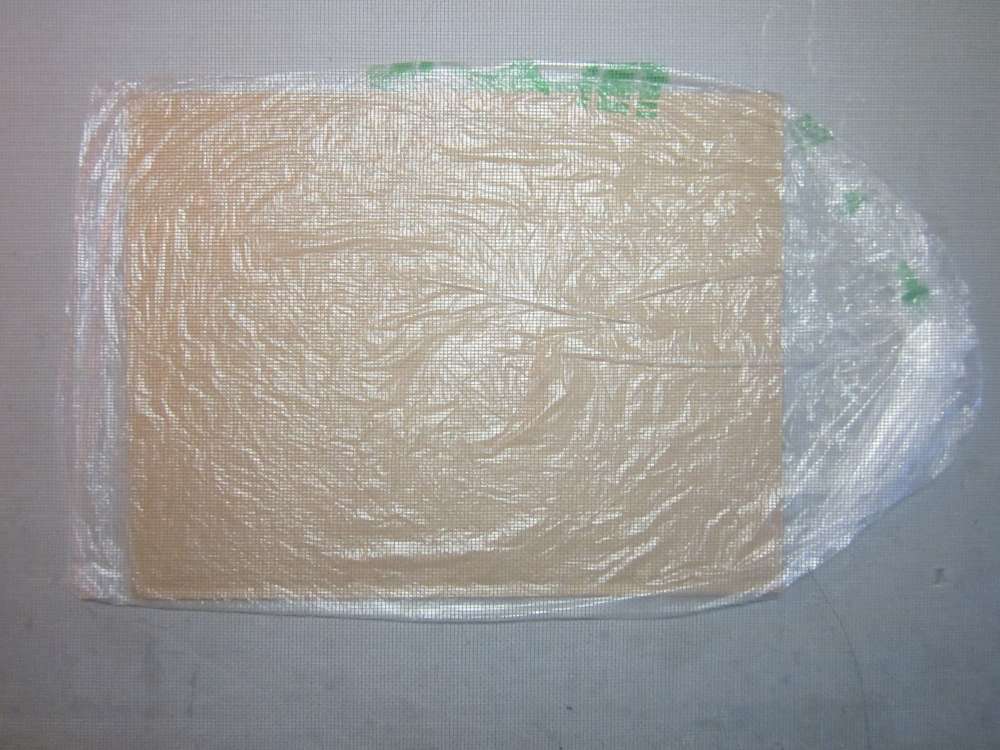
Cut out a suitable size piece of tissue to fit the structure.
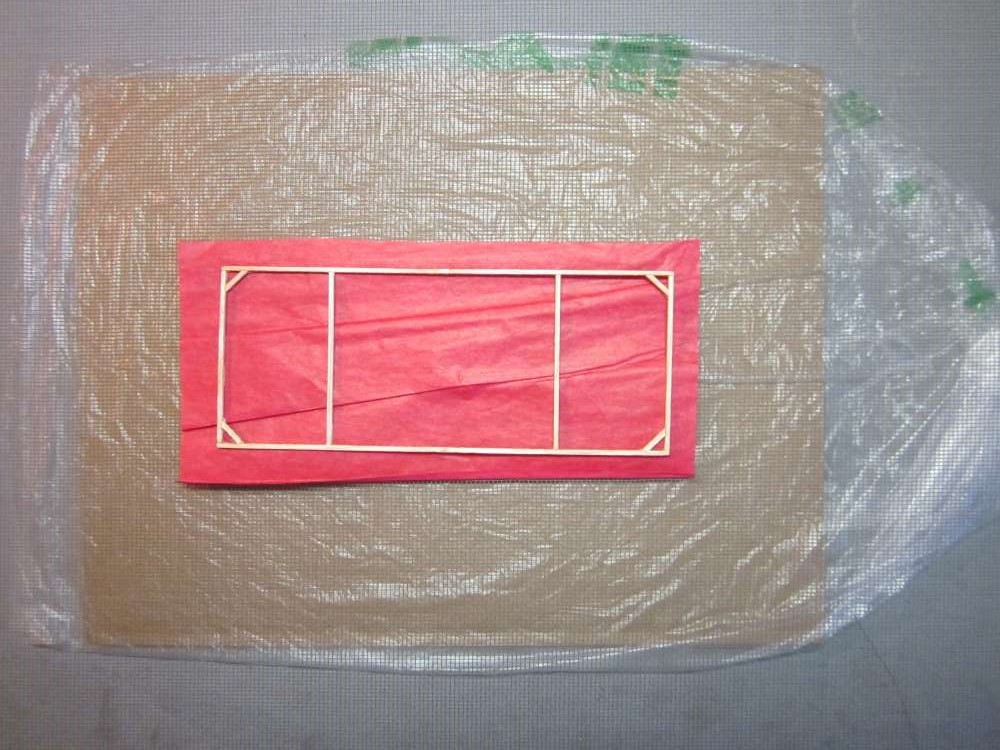
Remove the framework once the tissue size has been verified. Next, soak a terrycloth wash cloth or towel in water and wring it out until it is damp, but not wet. Place the damp cloth on top of the tissue.
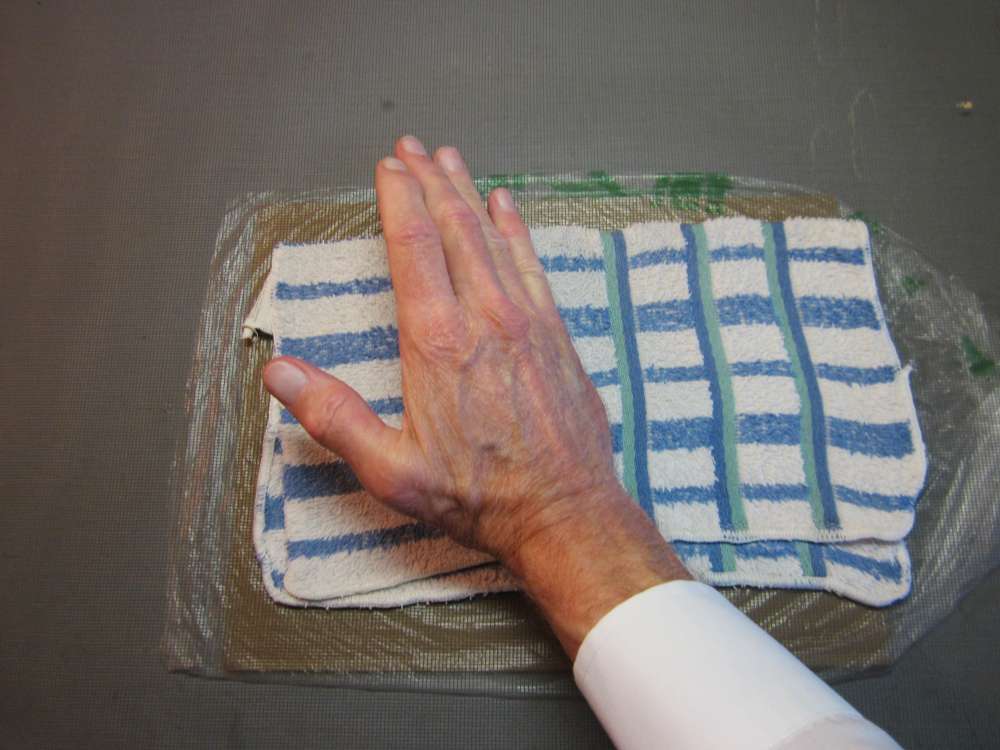
Press the damp cloth onto the tissue. After the tissue is dampened with light pressure, those wrinkles may be pulled out and the tissue is pressed again under the cloth, hard enough to make an impression. I use a rolling action with the side of my hand.
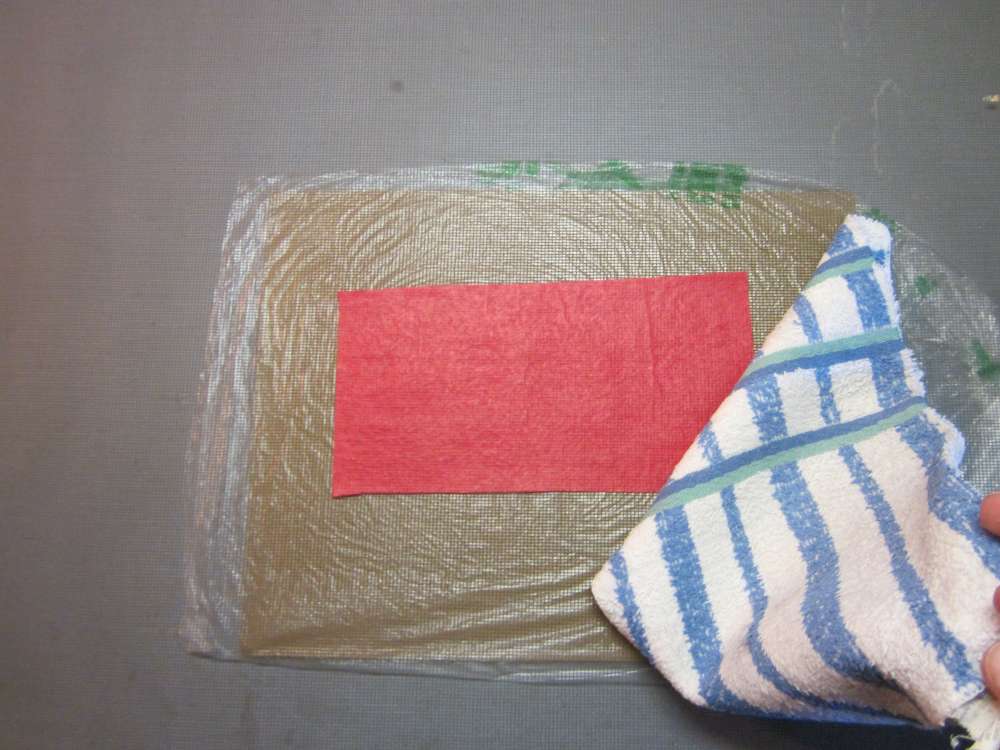
Remove the cloth to inspect the embossing. You can reapply the cloth and press some more if the embossing is not deep enough.
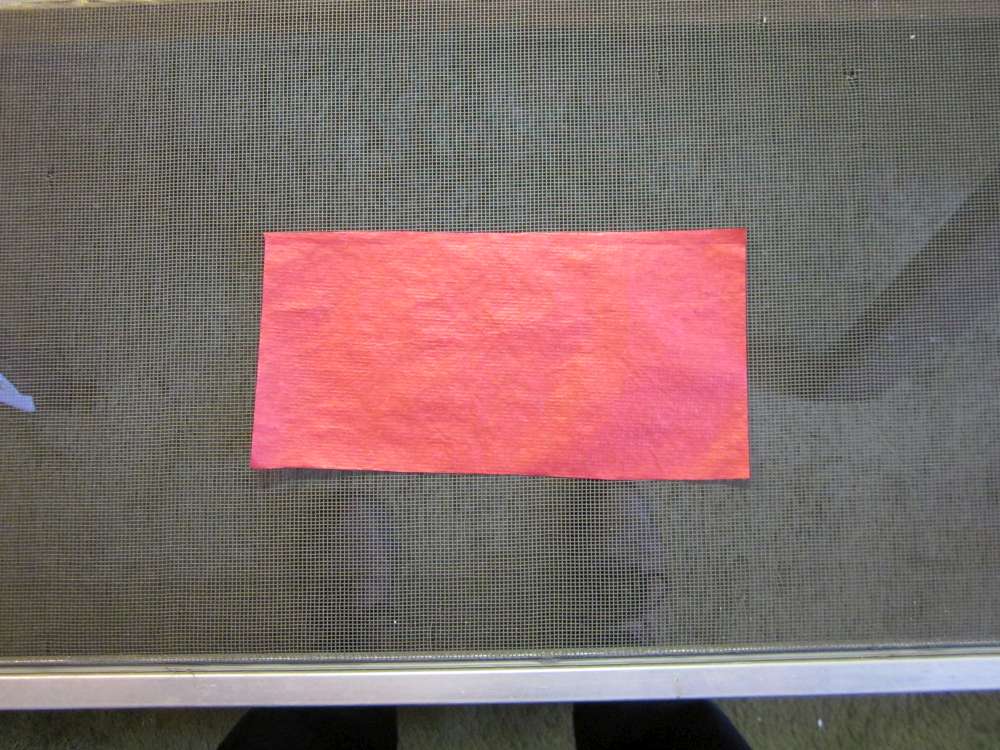
Exposing the tissue to air on both sides of the screen will hasten the drying process. Here you can see the pattern of little squares in the tissue.
Once the tissue is dry, you can adhere it to your structures in the usual way.
I wonder have far apart balsa formers can be so that the crushing strength is similar to that of the stringers. I think it is about ten times the size of the cross section of the stringer. I think that Dave hipperton put the numerical value in one of his master craft articles years ago I would really like to know what the value was to help me with a building problem
Dave hipperton used this value to enable him set the spacing in the fuselages of rubber powered free flight models of different sizes
It is not the crushing strength we are concerned with, but the buckling strength. Structural engineers characterize buckling strength according to Euler’s buckling formula. Gather a bunch of same size sticks, place one end on a kitchen scale and press down on the other end gradually until the stick just bends. Note the force required to just bend the stick. I show how to use this method to select sticks of different strengths for different locations on an AMA Cub here http://www.endlesslift.com/ama-cub-master-class/ . You will find that different sticks have different buckling strengths depending on the physical properties of that particular piece of wood. Also, if you cut one of these sticks to different lengths, you will find that the slenderness of the stick has an important influence on its resistance to bending. Slender sticks bend much more easily than short sticks. At a certain stubby value, the stick will no longer bend, it will only crush. Experimenting with sticks of different cross section shows that the cross sectional area and its shape have important influences on bending strength. In our application, the surrounding tissue paper can assist the sticks in resisting bending, also. In some cases, the stick is already bent. In our structures sticks seldom act alone. The forces are distributed throughout several elements of a complex structure.
The force applied by shrinking tissue paper depends on the thickness of the paper, its grain direction and its shrinking properties. Paper commonly has a moisture content of around 6%, but it can vary widely with humidity. As paper gets damper, it relaxes and stretches. As it dries, it contracts. The same piece of paper will stretch when mechanical stress is applied to it. By comparing the stretch corresponding with the amount of mechanical stress to the contraction with reductions in humidity you can get an idea of the stresses produced by changes in humidity.
I love this idea! It’s a great systematic way of having square wings that don’t warp!
I wonder if it’s worth CNCing different cool patterns (not that a screen isn’t pretty cool)…